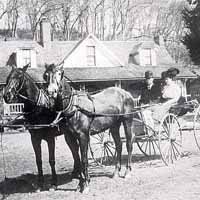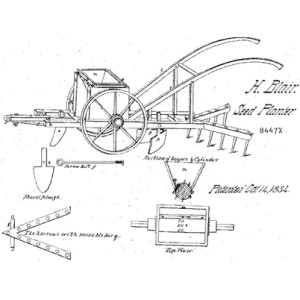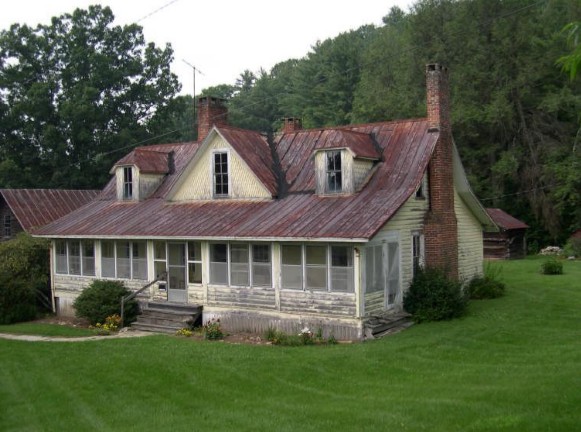Henry Blair Farm
Introduction
Text-to-speech Audio
Images

One of the inventions that Henry Blair patented.

The actual home and main building on the Henry Blair Farm property.

Backstory and Context
Text-to-speech Audio
Henry Blair was an inventor and farmer who was best known as the second African American to hold a United States patent. The
Blair farm buildings, located on the farm's property, were built in 1844 by
Henry Blair (1806-1891) and his wife Mary Steele (1806-1890). Alterations and modifications were made in the 1850s,
1880s, about 1900, 1938, and in the late 1950s-early 1960s. There are 9
acre tracts remaining of the Henry Blair Farm on Deerfield Rd. The farm was then listed on the National
Register of Historic Places in August of 2008[1].
Henry Blair was born in Glen Ross, Maryland, in 1807. Blair was an African-American farmer who patented two machines that were intended to help enhance agricultural productivity. Although Henry Blair came of age before the Emancipation Proclamation, Blair was evidently not enslaved[2]. Blair operated an independent business on his farm, where he patented the two productivity enhancing machines. Blair obtained his first patent on October 14, 1834, and the received his second patent later in 1836.
His first patent was for his development of the corn seed planter. This machine allowed farmers to plant their corn much faster and with much less labor. This invention functioned by splitting the ground with two shovel-like blades that were pulled along by a horse or other draft animal. The design helped to promote weed control while distributing seeds quickly and evenly.[3]
His second patent was for the invention of the cotton planter, and this invention's design and mechanics were very similar to the seed planter. The planter resembled a wheelbarrow, with a compartment to hold the seed and rakes dragging behind to cover them. After Henry Blair obtained his patents, the patent law changed to exclude slaves and men of color from patent eligibility. In 1871, after the Civil War, the law was reworked to grant all American men, regardless of race, the right to patent their inventions. Henry Blair died in 1860, leaving behind great inventions and a historic landmark where he defied rules and regulations that were cast upon African-Americans.
[2] Biography.com Editors. "Henry Blair Biography." The Biography.com Website. April 2, 2014. Accessed October 18, 2016. http://www.biography.com/people/henry-blair-21319709.
[3] Brodie, James Michael. Created Equal: The Lives and Ideas of Black American Innovators. New York, NY: W. Morrow and, 1993.
